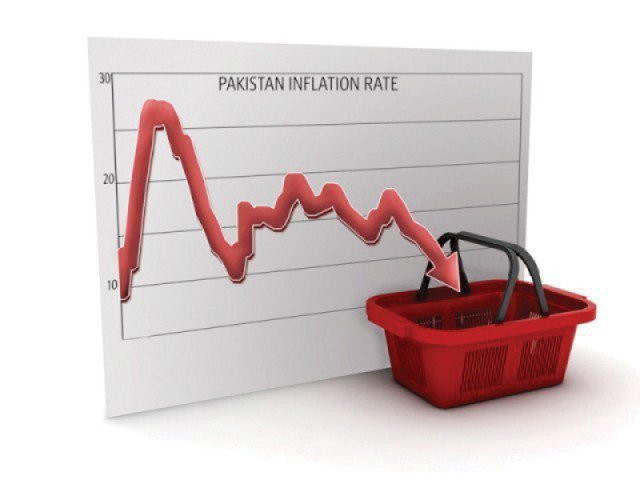Islamabad:
Inflation increased to 4.1% in July due to the increase in prices of non-perishable foods and energy products, but it remained good within the expected range, which still does not appear to shape the harsh attitude of the central bank, which is not willing to cut the interest rate into single digits.
The Pakistan Bureau of Statistics reported on Friday that the average prices of the basket with significant goods and services increased by a rate of 4.1% in the first month of the new financial year 2025-26. It was the highest increase since December last year, but remained within the $ 3.5 to 4.5% limit given by the Ministry of Finance.
The monthly leap in the index was also at over two years of highest level, as inflation increased 2.9% in July compared to the previous month, PBS reported.
The main reasons for the increase in the rate were the increase in prices of non-perishable food and administrative increase in gas and electricity speeds, according to the PBS data.
The central bank has kept the interest rate of 11%, which is far higher than the headline inflation rate. This only draws the benefits of the business banks at the expense of the company and the federal government, which gives away about half of the total budget in interest payments.
The government has awarded a total RS8.2 trillion for the debt service, which is equal to 46% of the approved budget for the next financial year.
In order not to justify any change in the rates, the Central Bank’s Interest Rates Committee this week stated that inflation prospects have worsened in the wake of higher than expected adaptation in energy prices, especially gas.
It also added that inflation is expected to stabilize in the target area in the future despite upward revisions of prices for motor fuel and electricity stars, energy prices remained lower on an annual basis.
Despite indicating that inflation will stabilize within 5% to 7%, SBP did not reduce interest rates.
The central bank also added that energy inflation is expected to rise from the current levels in the midst of the significant upward adjustment of gastariffs phased out of temporary reduction in electricity -strikes in the fourth quarter of the last financial year and the recent increase in motor fuel prices.
On Thursday, the government lowered gasoline prices over RS7 per year. Liter.
With the fresh inflation, the gap between headline inflation and the most important political rate for SBP remained of 6.9%. For the new financial year, the government has approved an inflation target of 7.5%, which still provides additional room to reduce interest rates.
The core inflation calculated after excluded energy and food has nominally increased in cities to 7%, but reduced significantly to 8.1% in rural areas, PBS said. There was a major uptick in non-birthday inflation that accelerated to 5.9% in cities and 5.4% in rural areas, according to PBS.
The city’s annual inflation accelerated to 4.4% due to the increase in prices of non-perishable foods, gas and electricity. The rate lowered to 3.5% in rural areas last month.
PBS reports inflation data from 35 cities and covers 356 consumer articles. In rural areas it covers 27 centers and 244 consumer articles. The PBS data showed that the inflation of food prices slowed down to 2.2% in cities and 1.5% in rural areas due to the decline in prices of perishable foods.
Sugar prices are still a major problem for the government because of its previous decision to allow exports of 765,000 tonnes. PBS reported on Friday that sugar prices on an annual basis were higher with 29.4% in July. There was over 6% increase in the last month alone despite the government and Pakistan Sugar Mills Association, which signed an agreement to hold the ex-factory price at RS165 per year. Kg.
PBS reported Friday that the average price of kg of sugar was RS179, while the maximum rate was RS190 per year. Kg.
The auditor for Pakistan told Pakistan to the Public Accounts Committee this week that Sugar Mills earned around RS300 billion Bonanzas because of the decision to export the item.
The pulses also became expensive of one -fifth last month. In the category non-food products, motor vehicle taxes experienced an increase of 169%, followed by 23% increase in gas prices and 14% in water supply prices.



